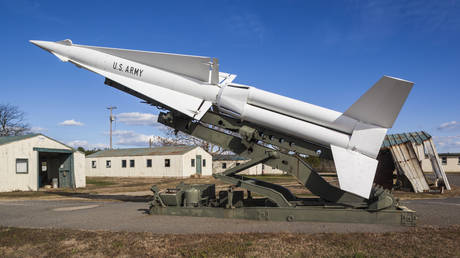ARTICLE AD BOX
Elkhan Nuriyev is a senior fellow with the Alexander von Humboldt Foundation. He is a global energy associate at the Brussels Energy Club and a senior expert on Russia, Eastern Europe and Central Asia at LM Political Risk and Strategy Advisory in Vienna.
As the war in Ukraine drags on for yet another year, a hard truth is becoming even harder to ignore: Military victory may no longer be a realistic objective for Kyiv — no matter how many billions the West sends, or how many Russian soldiers die.
This isn’t a popular outlook in Washington or Brussels, where the assumption persists that enough aid and resolve will eventually break Moscow. But despite Ukraine’s extraordinary resilience and the West’s deep pockets, that outcome is looking increasingly unlikely.
Rather, the war is hardening into a grinding stalemate — one that threatens to exhaust Ukraine, fracture Western unity and empower the very regime it was meant to weaken. The question Western policymakers must now confront is not whether Ukraine deserves support, but whether the current strategy is helping it win, or simply helping it survive long enough to lose more slowly.
This doesn’t mean Ukraine should surrender, nor does it mean abandoning Western support. It does, however, demand an honest reckoning: There is no pathway to total Ukrainian victory — and pretending otherwise is no substitute for strategy.
Where we are today, preserving Ukraine’s sovereignty and stabilizing Europe may depend less on weapons than on diplomacy.
On paper, the West is still backing Ukraine robustly. The latest $61 billion U.S. aid package passed after months of political gridlock; European countries are slowly scaling up defense production; and NATO continues to signal resolve. But the military reality is more sobering than many Western headlines suggest.
Firstly, Ukraine faces a demographic cliff: According to its own defense ministry, over 30 percent of conscripts are failing to report for duty. New mobilization laws are lowering the draft age to 25, but recruitment shortfalls persist. And the country’s population is shrinking due to emigration and war casualties.
Additionally, the economy has suffered a severe contraction from the war, greatly impacting infrastructure, industry and livelihoods. With emergency powers wearing thin and frustration mounting over corruption and mismanagement, political tensions are rising in Kyiv.
Russia, meanwhile, has adapted. Its economy is now on a war footing; its defense industry is outproducing the West in artillery shells; and its military — though inefficient and brutal — maintains the advantage in manpower and strategic depth. Its political leadership has also internalized long-term costs in pursuit of minimal territorial gains.
If anything, this month’s peace talks in Istanbul revealed just how far apart the two sides remain. Ukraine proposed a 30-day ceasefire. Russia offered two to three days, and to only retrieve bodies from contested zones. Agreements were limited to humanitarian gestures and prisoner exchanges. Even a list of 339 children abducted by Russia saw only token engagement from Moscow.
So, as Western leaders continue to insist they’ll support Ukraine “for as long as it takes,” the question now is, for what outcome?
A full restoration of Ukrainian territory by force would require vastly more aid, as well as a level of escalation — possibly including Western troops or direct NATO involvement — that democratic governments appear unwilling to contemplate. And this raises a difficult but increasingly necessary proposition: Supporting Ukraine may soon mean helping it end the war, not win it.
 This month’s peace talks in Istanbul revealed just how far apart the two sides remain. | Erdem Sahin/EPA
This month’s peace talks in Istanbul revealed just how far apart the two sides remain. | Erdem Sahin/EPAEasily mistaken for capitulation, such compromise is political dynamite in Western capitals. But history suggests otherwise: In 1940, Finland preserved its sovereignty through a painful but strategic peace with the Soviet Union. Korea, devastated by war in the early 1950s, accepted an armistice and avoided national collapse. These were not moral victories, but they were survivable outcomes.
A growing number of voices in Washington and European capitals now acknowledge this logic. U.S. House leaders have quietly discussed the need to “plan for a frozen conflict,” while European analysts warn 2025 may be “Ukraine’s most dangerous year yet” — not because of Russia’s advances but because of internal strain and Western fatigue.
However, a diplomatic settlement wouldn’t mean rewarding Moscow. It would mean recognizing that Ukraine’s survival may well depend more on preserving what it still controls rather than reclaiming what it cannot recover.
Such a compromise might involve a freeze in hostilities along current lines of control; international security guarantees that fall short of NATO membership but deter future aggression; a phased negotiation process tied to humanitarian exchanges and economic normalization; and postwar reconstruction aid that’s conditioned on governance reform and anti-corruption benchmarks.
Of course, none of this would be easy. Russia may reject compromise, and Ukraine may reject anything short of full justice. But that doesn’t absolve the West of its responsibility to lead.
Strategy isn’t about wishing for the best — it’s about navigating toward the achievable.
Ultimately, the issue isn’t whether Ukraine deserves more help — it does — but whether the current model of support can yield sustainable results. Under U.S. President Donald Trump, Washington is recalibrating its role in the conflict. And while his administration has signaled openness to peace negotiations, it’s unlikely to support indefinite military aid without a clear off-ramp.
That means Western leaders now face a choice: Stay on a path that promises endless aid and war, or begin designing a peace process that protects Ukraine’s sovereignty and prevents a wider European crisis.
After three years of this war, the most powerful way to support Ukraine may no longer be to help it fight but to help it stop fighting without losing its future.
.png)
 1 month ago
2
1 month ago
2








 English (US)
English (US)